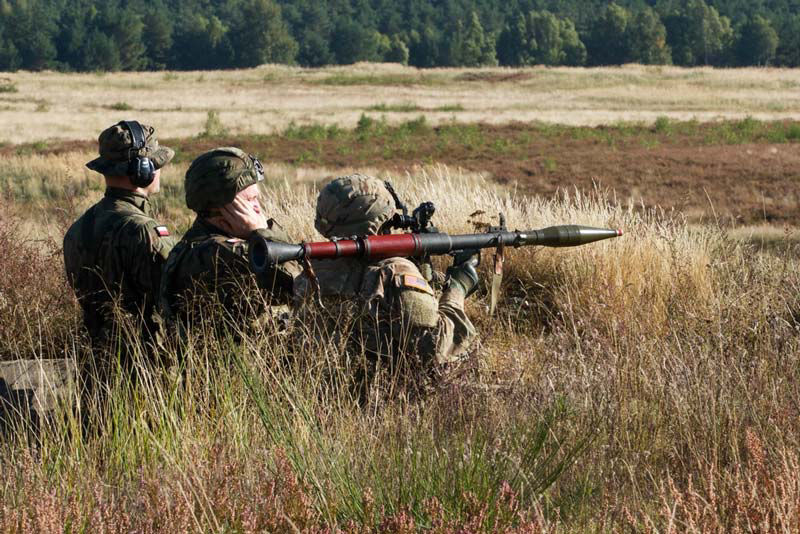

The RPG-7 is a mobile reuseable, unguided, rocket-propelled, shoulder-launched launcher for grenades. The RPG-7 as well as its predecessor RPG-2, also known as the RPG-2 were developed in the Soviet Union, and are currently produced through Bazalt, a Russian firm Bazalt. The weapon is equipped with an index of the GRAU index (Russian Armed Forces Index) 6G3.
The durability, simplicity cost, and efficiency of the RPG-7 has been able to make it the most widely employed anti-armor weapon around the world. There are currently 40 countries that use the weapon, and it is produced in a variety of variations by nine nations. It is extremely popular among rebel and irregular forces. The RPG was used in nearly every conflict across the globe in the 1960s, from to the Vietnam War to the current Ukrainian War.
The most frequently seen major variants include the RPG-7D (paratrooper) model that can be split into two pieces for ease of transport; as well as the light Chinese Type 69 RPG. DIO of Iran manufactures RPG-7s with olive green handguards as a Commando version.
The RPG-7 was first introduced by the Soviet Army in 1961 and was deployed at the squad level. It was a replacement for the RPG-2 and clearly outperformed the previous RPG-4 model during tests. The current model produced is the RPG-7V2, capable of firing standard and dual high-explosive anti-tank (HEAT) rounds, high explosive/fragmentation, and thermobaric warheads (see below), with a UP-7V sighting device fitted (used in tandem with the standard 2.7x PGO-7 optical sight) to allow the use of extended range ammunition. Its counterpart, the RPG-7D3 is the paratrooper equivalent model. The RPG-7V2 as well as the RPG-7D3 have been adopted by Russian Ground Forces in 2001.
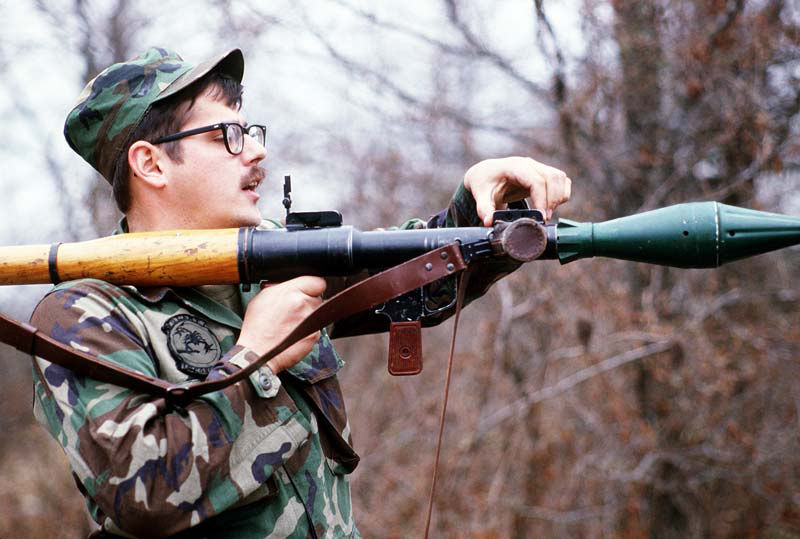
The launcher can be reloaded and is built around a tube of steel that measures 40 millimetres in diameter and 950 millimetres in length and weighing 7 kgs. The tube's middle is wrapped in wood to shield users from heat, and the ends are flared. Sighting is typically optical, with an iron back-up sight as well as passive infra-red and night sights are accessible. Launchers marked RPG-7N1 and RPG-7DN1 are able to install the multi-purpose night vision scope 1PN51 while the launchers RPG-7N2 and RPG-7DN2 are able to mount the night vision scope that is multi-purpose 1PN58.
Similar to similar weapons, the grenade is protruding out of the tube for launch. It measures between 40 and 105 millimetres in size and weighs anywhere between 2.0 to 4.5 kilograms. It's launched using an explosive charge of gunpowder, which gives it a speed of 120 metres per second and generating a cloud of blue-grey smoke that could reveal the location of the shooter. The rocket motor is ignited after 10m and continues to flight for up to 500 metres with the maximum speed of 295 metres per second. The grenade is supported by two fins that are deployed during flight: one large set on the stabilizer pipe to keep the direction, and a smaller rear that is designed to cause rotation. The grenade is able to fly as high as 1,100 meters The fuze determines the maximum distance, which is usually at 920 metres.
According to the United States Army, the RPG-7 munition has two sections: a "booster" section and a "warhead and sustainer motor" section. They must be put together into an ready-to-use weapon. The booster is comprised of an "small strip of powder" which is used to propel the grenade from the launcher. The sustainer motor is then ignited and pushes the grenade forward for the following few seconds, giving the grenade a maximum speed of 294 meters every minute (660 miles per hour). The TRADOC bulletin gives anecdotal evidence that the RPG-7 is fired from inside buildings, which is in line with the two-stage configuration. It states that a standoff of 2 metres to an obstruction in the rear is required for firing from inside areas or fortifications. The fins do not just provide stability for drag, but they are designed to provide a slow rotation of the grenade.
Because of the design in the RPG-7 sustainer/warhead section, it reacts in a different way to crosswinds. A crosswind can cause pressure on the fins that stabilize which causes the projectile to rotate into the wind (see the Weathervane effect). When the motor of the rocket is still running it will cause the trajectory of flight to turn towards the wind. The TRADOC bulletin provides guidance on aiming problems for moving targets that are further away when there is a crosswind at a certain length. Like a recoilless rifle, the RPG-7 does not have any recoil at all The only impact during firing is the sudden acceleration of the launcher after the rocket has left the tube.
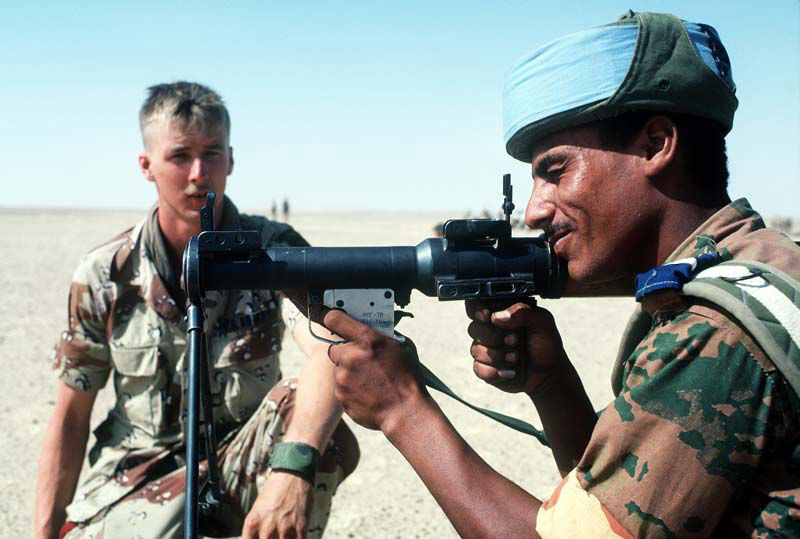
The RPG-7 can shoot a variety of warheads designed for anti-armor (HEAT, the PG-Protivotankovaya Granata) as well as anti-personnel (HE, Oskolochnaya Granata) for various reasons, typically equipped with an impact (PIBD) as well as an 4.5 2nd fuze. The rate of penetration depends on the warhead and can vary between 30 and 60 cm of RHA device that is used to take down reactive armor in one shot.
The current production ammunition for the RPG-7V2 is comprised of four types of ammunition:
- PG-7VL [c.1977] Improved 93mm HEAT warhead that is effective against the majority of vehicles and targets fortified.
- PG-7VR [c.1988] Dual 64 mm/105mm HEAT warhead to defeat modern armored vehicles that are equipped with armor blocks that react. First warhead (64 mm HEAT) explodes the armor block that is reactive early, while the second (105 millimeter HEAT) is able to pass through the gap to strike the armor beneath.
- TBG-7V Tanin [c.1988105mm Thermobaric waread to promote anti-personnel and urban combat.
- The OG-7V [c.199940 mm fragmentation warhead designed for anti-personnel combat. Has no sustainer motor.
Other variants of warheads are:
- PG-7V [c.1961Baseline 85mm HEAT warhead that can penetrate the 260mm RHA.
- PG-7VM [c.1969] Improved 70mm HEAT warhead that can penetrate 300 millimeters RHA.
- PG-7VS [c.1972] Upgraded 73 mm HEAT warhead that could penetrate 400mm RHA.
- PG-7VS1 [c.mid-1970s] a less expensive PG-7VS model capable of penetrating 360mm RHA.
- GSh-7VT [c.2013Anti-bunker warhead that has cylindrical follow-through blast fragmentation weapon followed by a penetrator that is explosively formed.
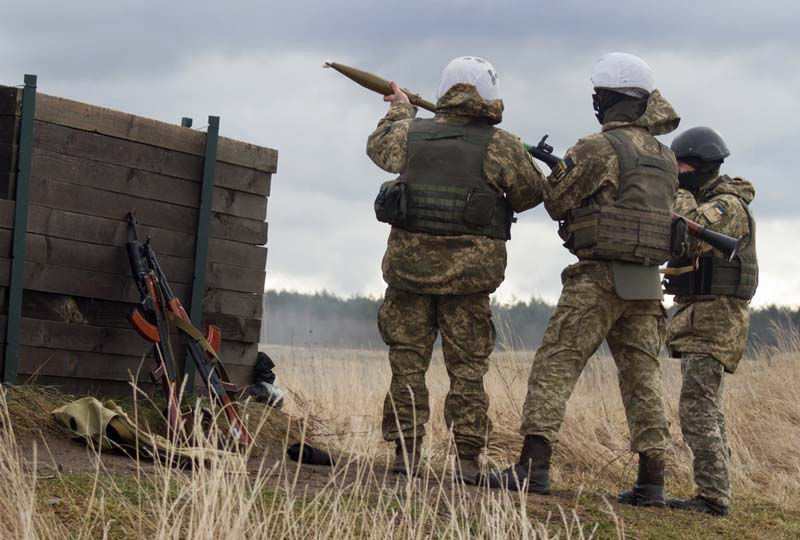
The Soviet RPG-7 was first utilized during the year 1967, by Egypt in the Six-Day War. It was also used in the Vietnam War. However, it was not widely used use in Vietnam until the year following.
It is hard to accurately fire when firing at distances of more than 200 meters. In the Soviet-Afghan War, the mujahideen were known to fire the weapon for ranges less than 80 meters.
The RPG-7 was employed in the Provisional Irish Republican Army in Northern Ireland from 1969 to 2005, notably within Lurgan, County Armagh, in County Armagh, where it was employed against British Army observation posts and the massive military base at Kitchen Hill in the town. The IRA also employed the RPG-7 in Catholic regions in West Belfast against British Army armored personnel carriers as well as Army Forward Operating Bases. In fact, Beechmount Avenue in Belfast, Ireland was often called "RPG Avenue" following the attacks against British troops.
Then, in Mogadishu, Somalia, RPG-7s were used to take down two U.S. Army Black Hawk helicopters in 1993.
Powerful. Cheap. Simple. Robust. The RPG-7 is without doubt the most well-known anti-tank rocket launcher that has been invented from the time of its launch in 1961. It is still in production, with over 9 million units manufactured up to the present. The RPG-7 is still in service with more than 40 countries, as well as many irregular military organizations.
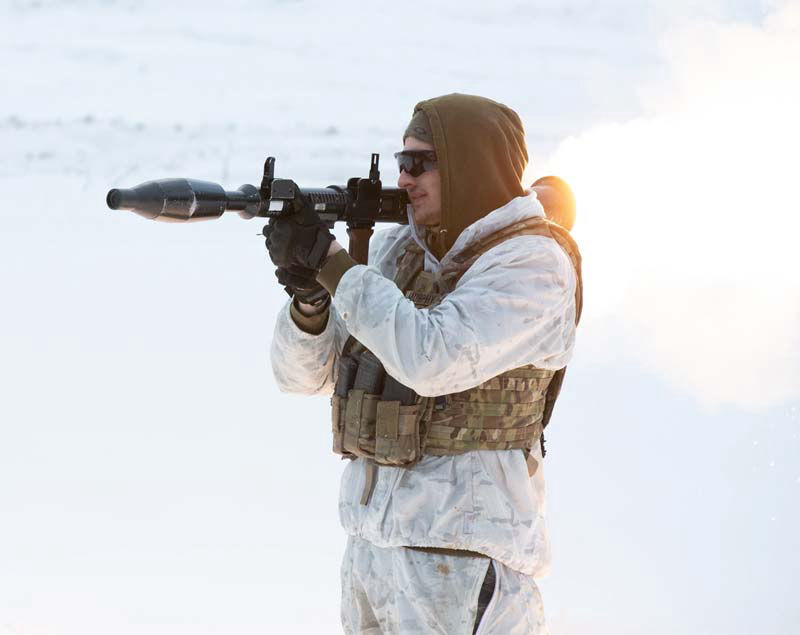
The RPG-7 is the Russian Ruchnoy Protivotankovvy Granatomyot , or hand-held anti-tank launcher for grenades (although it is often known as"Rocket Propelled Grenade" or "Rocket Propelled Grenade" or "RPG") it is an improvement on the 1949 RPG-2 which was based on its predecessor, the World War II German Panzerfaust and US Bazooka. The main improvements over the RPG-2 include a significantly improved range as well as greater armor penetration.
The RPG-7 is a single-shot, reusable smoothbore steel tube that has an overall diameter that is 40 millimeters. The recoilless, shoulder-fired muzzle-loaded launcher is capable of firing many different types of rockets. Iron and optical sights typically are standard, but night vision sights are also employed.
The barrel's middle is covered with wood to shield the user from scorching heat. The two handles are situated close to each other in the middle of the weapon.
Another benefit of this multi-faceted weapon is that it has the ability to shoot inside buildings because of its small back-blast. However, it gives an extremely noticeable flash, sound, and smoke.
After 10 meters after 10 meters, the rocket's internal motor starts to fire and four stabilization fins are folded out and give the rocket a maximum velocity that is 300 meters in a second.
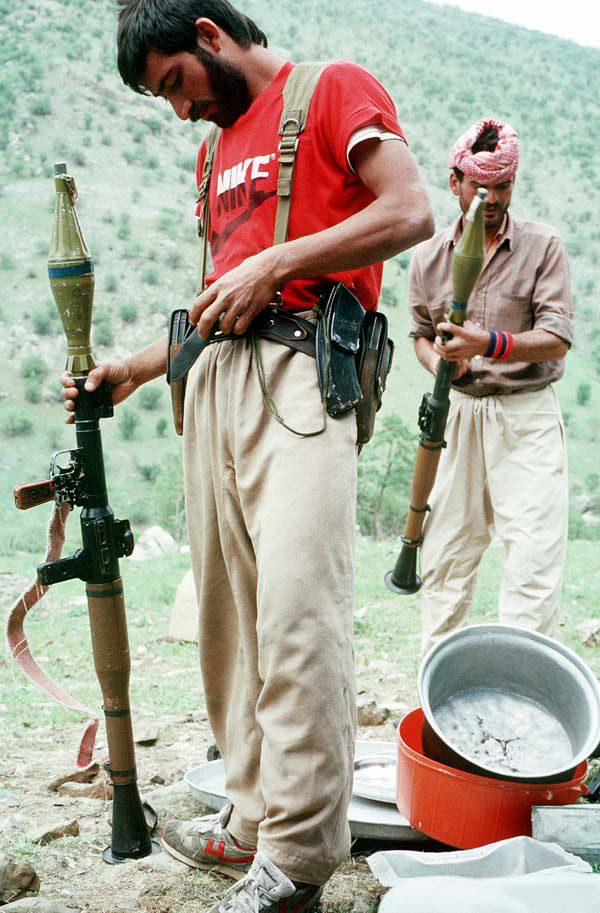
Typically the RPG-7 is controlled by a gunner as well as an assistant who is responsible for holding extra rounds and protects the gunner from attacks.
The RPG-7 has a maximum distance of 920 meters , at which the rocket explodes. However, it's only believed to be effective up to 200 meters. At that the range is believed to have 50% of hitting a slow-moving 5 by 2.5 meters target.
In its 60-year service duration it has been used to RPG-7 was used to destroy tanks, demolish armored personnel carriers, fortifications, buildings as well as attack infantry and even shoot down helicopters that fly low. Additionally, the basic RPG-7 has killed more helicopters than the majority of man-portable air-defense missile systems. Insurgents also have extensively used "small boats" equipped with Machine guns and RPG-7s.
Larger rockets are mounted at the top of the rocket launcher. These types of weapons are often referred to as "spigot mortars".
Rockets are used to describe:
The PG-7V baseline is 85mm high Explosive Anti Tank (HEAT) missile. It penetrates 260 millimeters of homogenous armor rolled;
The PG-7VM is a redesigned 70mm HEAT rocket. It can penetrate around 300 millimeters or armor. The rocket is faster than the PG-7V baseline as well as is less susceptible to wind crosswinds and therefore more precise;
The PG-7VS is a 73mm HEAT rocket with a 73 mm HEAT. It's a more advanced variant of the PG-7VM that has greater armor penetration. It still maintains its the weight and dimensions. It can penetrate up to 400 millimeters of armor. The rocket was first used in 1973.
The PG-7VS1 is a less expensive variant of the more expensive PG-7VS. It can penetrate up to 360 millimeters or armor. It was first used in the late 1970s.
The PG-7VL is a bigger HEAT rocket with a diameter of 93 millimeters. Its range is up to 150 meters against tanks, and 300 meters for stationary targets. It can penetrate up to 500 millimeters of armor.
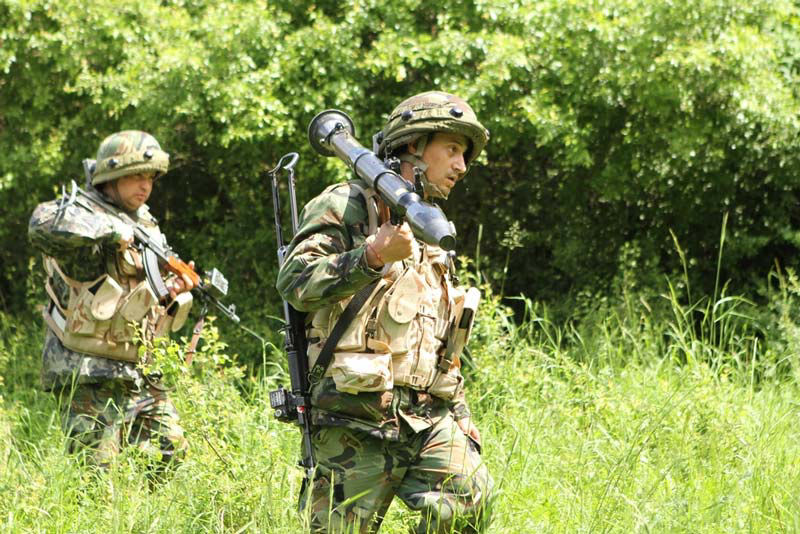
The PG-7VR is a 105mm rocket that has a tandem HEAT warhead. Its range is 100 meters against tanks, and 200 meters against stationary targets. It can penetrate up to 600 millimeters of steel armor with ERA and 750 mm with ERA. The same warhead is employed by RPG-27 single-use rocket launcher as well as the RPG-29 rocket launcher that can be reloaded. The rocket was introduced in the late 1980s and was designed to compete with the latest Western main battle tanks of the third generation, like American M1 Abrams and British Challenger;
The OG-7V is a 40mm H-FRAG rocket that has a huge lethal radius;
TBG-7V is a 105mm thermobaric rocket that has an explosive and devastating effect.
The RPG-7 has been through such a wide and diverse service that it's nearly impossible to count all the battles it has participated in. Since to the Vietnam War to the Gulf War The RPG-7 is certainly battle-tested.
The RPG-7 is still being manufactured in nations like Iraq, Romania, China as well as Bulgaria. Although it is expected to be used by low-budget forces for a long time in a fire-support function, it is currently being removed by the majority of militaries from anti-armor roles because of its ineffectiveness against modern main battle tanks.
One of the reasons RPG-7s are so well-liked is their low price, ranging between $500-2000 for a launcher, and $100-500 per rocket.
Variants
RPG-7: initial model designation.
RPG-7V2 Version 2: upgraded version. It was introduced in 2001 and is now a present production model that is used by the Russian military, as well as several other countries.
RPG-7D: light paratrooper model which can be cut into two pieces to transport.
RPG-7D3 Improved paratrooper model. It is comparable to the RPG-7V2. It was introduced in 2001 and is currently a production modelthat is used by in the Russian military and perhaps some other countries.
Type 69 Improved Chinese version. Its Type 69 is about 2 kilograms lighter and 50 millimeters smaller. Like the RPG-7D3 it folds into two pieces. Additionally, the forward grip was removed to reduce the cost of the weapon.
AirTronic USA RPG-7: the American-made clone to the RPG-7. It comes with a variety of Picatinny-type accessory rails , and utilizes common M16 assault rifle parts. The weapon was used in Peru, Philippines and possibly several other countries. The company also created identical PSRL-1 Mk.777 as well as GS-777 rocket launchers, which are improved and upgraded versions of the RPG-7.
B-41: Cambodian and Vietnamese designation.
The anti-tank grenade launcher RPG-7 is durable, simple and deadly. It's also very popular. In its current form, the RPG-7 is the result of years of modifications and revisions. It was the "original" RPG -- inspired by an earlier German Panzerfaust Anti-Tank Weapon - was later was followed by RPG-2 and the RPG-3 and so on. Although the RPG-4 was successful in field trials in the year 1961, tests of a more modern model, called the RPG-7 were made public that same year, with significantly improved firing range and armor-piercing capabilities. In 1961, it was the RPG-7 and not the RPG-4 that was the one that the Soviet Armed forces were able to adopt for use. Nowadays, the RPG-7 is in use by forces of more than forty nations and is also employed according to reports, by various terrorist groups in and around the Middle East and Latin Americas.
We now know the meaning of an RPG-7 and how it works, let's to look into how one works.
Firing an RPG-7
The RPG operator, or artillary assistant is able to take an propelling charge (booster as shown in the image below) and then screws it to the warhead's end. It is basically an stabilizing pipe with four fins for stabilizing that are wrapped around with two fins added at the rear end. A cardboard container is encased around the back of the pipe that is stabilizing. In the container is a small amount of Nitroglycerin powder is encased around the pipe that stabilizes it and an initial charge or primer of gunpowder is placed into the bottom of the pipe that stabilizes.
The RPG operator, or the artillery person is then able to take this artillery and puts it in the front end of the RPG launcher, so that it aligns with the trigger mechanism.
When the RPG operator presses the trigger, the following happens:
The force generated by the accumulated gases hurls the grenade off of the tube at around three hundred feet per second (117 metres per second). The sudden acceleration of the grenade that leaves the launcher triggers a piezoelectric fuze which will ignite the primer (pyro-retarding gunpowder mix). The squib then gets ignited of nitro, which then activates rocket's propulsion mechanism (sustainer motor) to propel the grenade for the remainder of its course.
A socket inside the breach block reduces recoil when firing. The exhaust gases escape towards the rear of the launcher and the operator can immediately load the weapon. In reality there is no way that an RPG operator will ever be in a stationary position and wait to reload. The launching flash and the whitish blue-gray smoke provide a clear signal to the adversaries that their RPG launcher's location. A successful, long-lasting RPG user is one who swiftly changes positions and hides.
There are a variety of grenades that could be employed in the RPG-7. Certain have a point initiating and a basing-detonating (PIBD) piezoelectric fuze, which means they are impact grenades. Many others also come with backup time delay systems, meaning that in the event that they do not hit a target within the time frame specified (something similar to four and five minutes) the grenade will disintegrate. The most frequently fired weapons are high Explosive(HE) as well as high Explosive Anti Tank (HEAT) rounds.
The grenades that are fired from impact must not be armed until they actually fire since any contact that is accidental could cause them to explode. Because they're typically fired by a launcher, they should have an automated arming system. In certain designs, such as the one described above the arming mechanism is activated by the propellant explosion which drives the grenade out from the gun. In other designs the grenade's acceleration, or the rotation it undergoes during flight arm the detonator.
For the timed back-up delay the same mechanism that ignites rocket will set it off. The spark starts an incendiary material that burns slowly inside the fuze. Within about four seconds, the delay material is burned throughout. The final element is linked with the detonator. The material that is burning at the finish of the delay ignites the material inside the detonator, which explodes the warhead.
In addition to the AK-47 and the AK-47, no other weapon has been seen on television screens more often in recent times more than the RPG-7. It is officially identified by its Russian by the name of Reaktivnoi Protivotankovii Granatomet (Hand antitank launcher for granades) The slim hollow tube, with its conical rear and large diamond-shaped warhead continues to play a crucial role in modern warfare as its smaller arms comrade. Similar to the AK it's the reason behind this is that it's a simple to use solid, reliable, and efficient weapon that can take away all except the most modern armor. The RPG-7 has proven itself to be the most powerful antitank weapon that can be fired from the shoulder in the world and can be likely to continue its reign of destruction for the next decade.
The RPG-7 was first introduced into Soviet Army service during the year 1962. It was a weapon that was, like many weapons of the time, can be traced back in the Second World War, when the Germans started using simple recoilless launchers that had an enormous Warhead, known as Panzerfausts.
Made up of an empty tube that has an propellant stick that is connected to a semi-hemispherical High Explosive AntiTank-shaped charge (HEAT) Panzerfausts were used with great success against Allied armor when they swarmed towards their Third Reich. The design of the Panzerfausts gave thousands of poor-trained soldiers and old men from the final ditch VolkSturm units to instantly be able to destroy tanks. It also created a lot of concern when armor was used in restricted areas like cities or forests. In fact, so dismayed was the Americans at the German method of dismantling tanks, and then discarding the launcher in order to surrender, that they demanded everyone who did this to be shot regardless of whether they held their hands raised or waved an white flag.
At first, the Panzerfausts had an very short range (30 meters) however, they were progressively increased in time using more powerful propellants, ranging from 60 to 100, 150 and eventually the 250-meter version. When the Soviets confronted the first Panzerfausts and were immediately at work during the war trying to develop their own designs and the main feature being that it was capable of reloading.
The first prototypes were developed in 1944, and was referred to as the LPG-44. The LPG-44 was a 30mm diameter launcher, it weighed 4.4 pounds when unloaded. It could fire a PG 70 70mm diameter HEAT round. The weapon was later given the designation RPG-1 and was able to shoot at an effective range of 75 meters. The weapon's penetration of 150mm steel was lower than that of the Panzerfaust however, and it was withdrawn in 1948.
The next step was the RPG-2. It was externally comparable in dimensions to the RPG-1 however it had certain improvements. The most notable was the larger 40mm tube (6.4 pounds unloaded), and an 80mm warhead , which was designated the PG-2. It was twice as long at 150 meters and was fired on a more flatter trajectory, resulting in greater accuracy. It was also able to penetrate armor, at 200 millimeters. The widespread use of the launcher started in 1954 and the launcher was the main weapon employed in those in the North Vietnamese Army as well as the Vietcong during the initial stages in the Vietnam War against the U.S. Additionally, there were Chinese made versions, and were designated the B40. In the theater, this name was used as often as RPG in reference to antitank weapons employed by rebels.
Yet another more dangerous version was released which claimed to be the benchmark against which all other versions were judged. While not relying solely on the RPG-2 and RPG-3, the U.S.S.R began looking for a replacement in the year 1958. The result was the largely unnoticed RPG-4 that had an 45mm launcher tube as well as an the warhead was 83mm. The launcher was a hefty 10.3 pounds and increased the range to 300mm. It was able to penetrate more armor with 220mm, and, as the only model in the line, had the ability to see through optically. It was a promising model, however the RPG-4 was quickly wiped out when the final RPG came out with the 7 model. The new design, even when it was being designed simultaneously, was far superior than the model that came with twice the range of 300 metres for target targets, and up to 500 meters for a large-area target. It also had an optical sight that rode on a tube that was 40 millimeters and used a larger 85mm PG -7 HEAT warhead capable of piercing 260 millimeters of armor.
The regular RPG-7 round, which is the most popular variant and the subsequent enhancements have the same fundamental functions dating back to Panzerfaust. When the round is fired stabilizer fins are deployed and create a slow rotation as it flies through the sky at around 965 ft./s. If it strikes a hard surface, a piezoelectric component inside the nose is crushed and transmits an electric signal to a fuse located at the bottom of the explosives, which is located behind an unfinished copper cone. When the explosives start to ignite and the cone is forced to rotate inside itself and shoot forward in an molten, thumb-sized Slug with a temperature of around 2,000 degrees. In the case of an armored tank turret, it can create a similar size hole in the metal until it is able to reach the inside. Inside, it bounces around and flaming particles fly around at a rate of several thousand miles per hour until it ceases to function. Everything from flesh to metal is ripped apart leaving only an uncharred area and a human remains that are so burned and ruined that the majority are able to be cleaned out by the aid of a hose.
This is the way a shaped charge operates and all of it happens in just a few seconds. This is a method that, prior to the time when the advent of advanced ceramics into armor for tanks in the 1970s, required designers to address an insecurity gap that could be overcome only by creating a tank that had so thick armor that it was practically immobile. It was therefore a welcome relief when lighter ceramic was made available.
There were other targets that the RPG was equally adept in destroying, but those that are still at risk. Helicopters. They are used in this capacity, Western troops and America particularly are all too familiar with RPG-7's capabilities. This is primarily due to the most well-known incident in which two RPGs were used to take off U.S. Army UH 60 Black Hawks hovering over Mogadishu, Somalia in 1993. The incident caused those who were part of the planned operation to be trapped and forced to take part in some of the most difficult close-quarters battles in the history of close quarters combat since Vietnam War. The story was later immortalized in a book and a film, it was dubbed forever "Blackhawk Down..'
In the past, the RPG-7 was employed in the battle against U.S. and coalition forces in street corners of Iraq and Afghanistan and Afghanistan, with different results. The majority of modern western tanks have proven capable of taking numerous RPG strikes and carry on fighting, whereas lighter armored vehicles typically utilize wire mesh cages that extend around the body to explode the round, making it less effective in getting into.
The main reason it is causing issues, however, is with the helicopter. Particularly in 2011, when "Extortion 17," an U.S. Army Chinook helicopter with 38 people as well as an K-9 dog was shot down over Afghanistan by what was likely an RPG-7. The incident remains the biggest loss of life for the U.S in one incident in the War on Terror.
There have been numerous attempts in the past to improve the RPG-7 by creating new designs and larger warheads. They have been manufactured in small quantities and have not even started to replace the original RPG that is still seeing developments in the area of warheads like fragmentation, thermobaric and even tandem designs to beat modern , sophisticated armor. However, the launcher tube itself remains virtually unchanged since 1962, which proves that it is a weapon of respect, just like the Kalashnikov. At just 300 dollars it is a bargain. RPG-7 remains the standard weapon of choice for any soldier or guerrilla seeking to unleash a massive amount of destruction for retail at an affordable wholesale cost.
Made with Mobirise
Free HTML5 Page Creator